18 Properties Owned by the Spanish Royal Family, from Madrid Palaces to Monasteries
- Oops!Something went wrong.Please try again later.
- Oops!Something went wrong.Please try again later.
- Oops!Something went wrong.Please try again later.
We know that the British royal family has a laundry list of castles and properties to their name, from Buckingham to Windsor, but what about their Spanish counterparts? Turns out, the properties owned by the Spanish royal family stunningly amount to...zero. Yep. In fact, King Felipe VI is considered one of Europe’s “poorest” monarchs, worth just over $2.4 million. In comparison, last year the British monarchy was reportedly worth about $461 million. So, what about all these royal properties in Spain? They’re actually managed by the Patrimonio Nacional, aka the National Heritage, as the Spanish crown surrendered the properties to the government. Though the government manages the estates, the monarch still has the right to use the properties. The portfolio consists of royal palaces, country residences and monasteries founded by the crown, plus 51,000 acres of forest and 1,455 acres of historical gardens. So, here are 18 properties owned by the Spanish royal family (at least, historically), from the imposing royal palace in Madrid to an island getaway on Majorca.
25 Properties Owned by the Royal Family
1. Royal Palace of Madrid
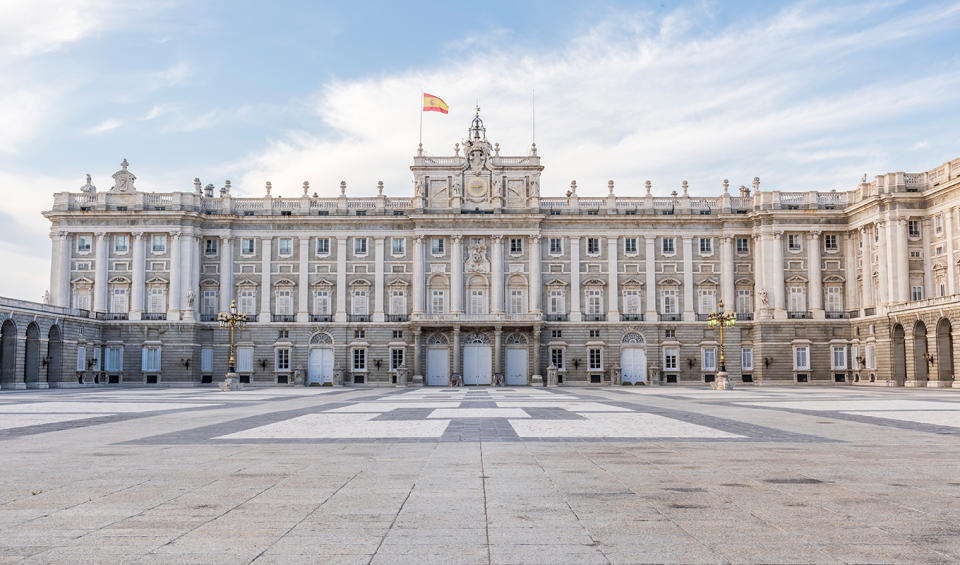
David Espejo/Getty Images
The Royal Palace of Madrid is the king’s official residence and Western Europe’s largest palace with over 3,400 rooms. The palace itself dates to the 18th century, though it occupies the land of the old Alcázar of Madrid, a medieval fortress that succumbed to fire in 1734. According to legend, King Philip V’s court members set the fortress ablaze in order to construct something à la Versailles (Philip was a grandson of Louis XIV and first Bourbon to take the Spanish throne).
2. Real Monasterio de San Lorenzo de el Escorial

MyLoupe/Getty Images
Located at the base of Mount Abantos just outside Madrid in the Guadarrama mountain range, the monastery was originally constructed for the Order of St. Jerome, whose job was to pray for the royal family’s salvation. A symbol of the Spanish Golden Age with incredible scenery, the spot earned its place on the World Heritage list in 1984.
3. Royal Site of El Pardo
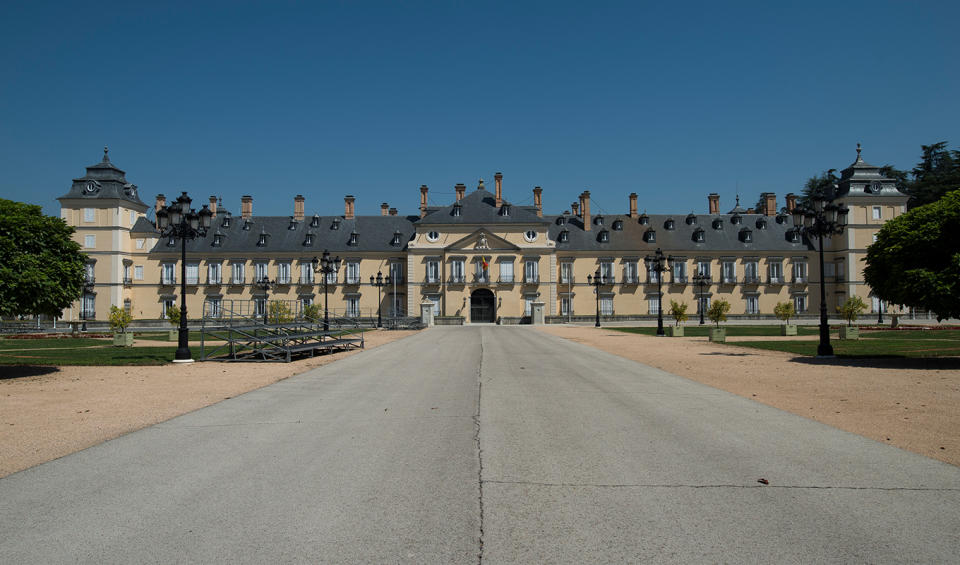
The Royal Site of El Pardo, northwest of Madrid, consists of a palace and woodlands and serves as the official residence for foreign heads of state. In a former life, the site was a royal hunting lodge built by Emperor Charles V in the 16th century. It was completed by Philip II, who gave it a Flemish flair. According to National Patrimony, the area is the largest Mediterranean forest in the Madrid area.
4. Royal Site of Aranjuez
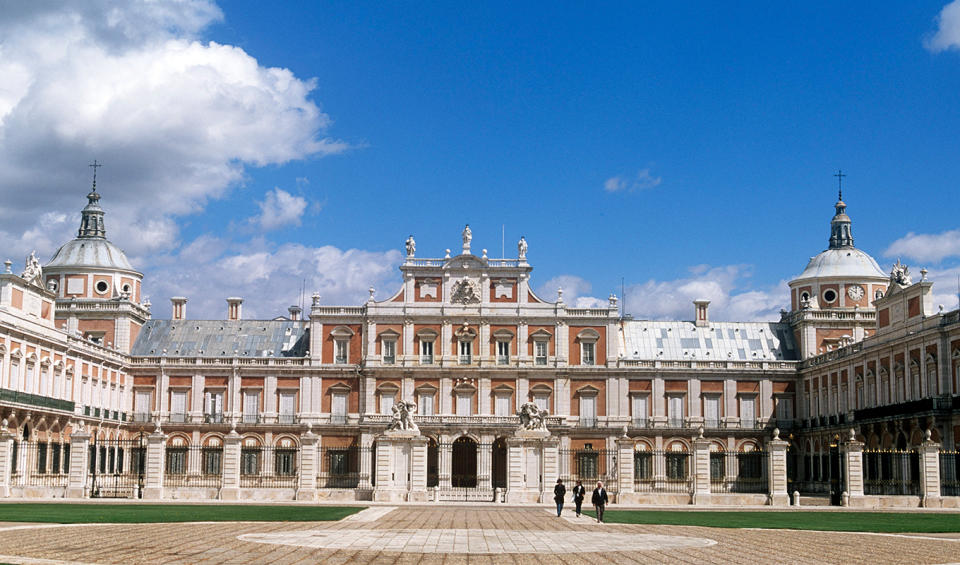
DEA/W. BUSS/Getty Images
A UNESCO World Heritage Site, the Royal site of Aranjuez is located at the intersection of the Tajo and Jarama rivers south of Madrid. It features 275 acres of gardens and a royal palace. It was previously the property of the Masters of Santiago, a 12th-century military and religious order. In the 15th century, Queen Isabel acquired the property.
5. Royal Convent of San Pascual
Located on the grounds of Aranjuez, the Royal Convent of San Pascual is a royal patronage created by Charles III. It remains a working convent inhabited by Franciscan Conceptionist sisters. Built in 1770, the church takes the shape of a Latin cross.
6. Royal Site of La Granja de San Ildefonso
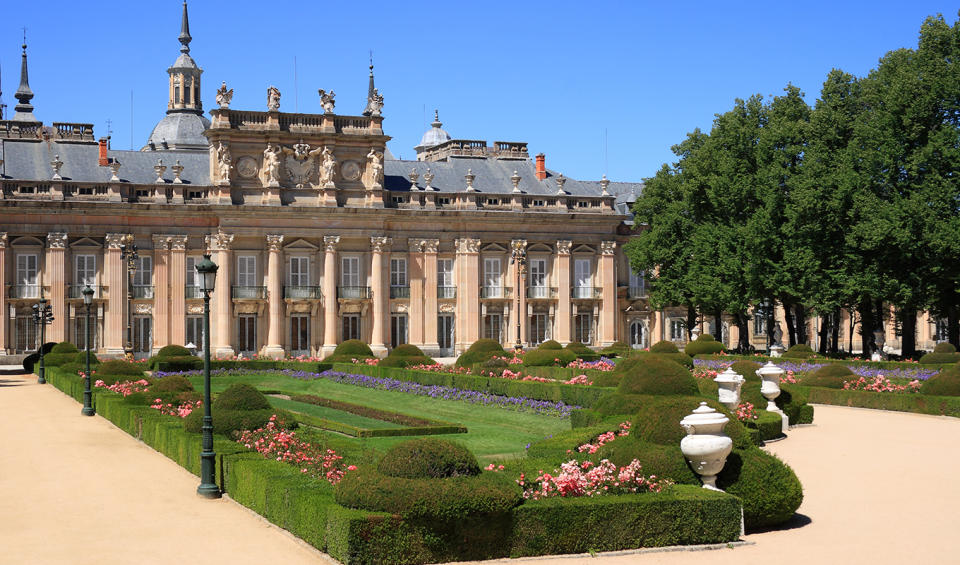
Marlee90/Getty Images
This is considered the magnum opus of Philip V, who constructed the palace and gardens to invoke that of Versailles. The area had long been a favorite hunting ground for Castilian kings.
7. Riofrío Royal Palace
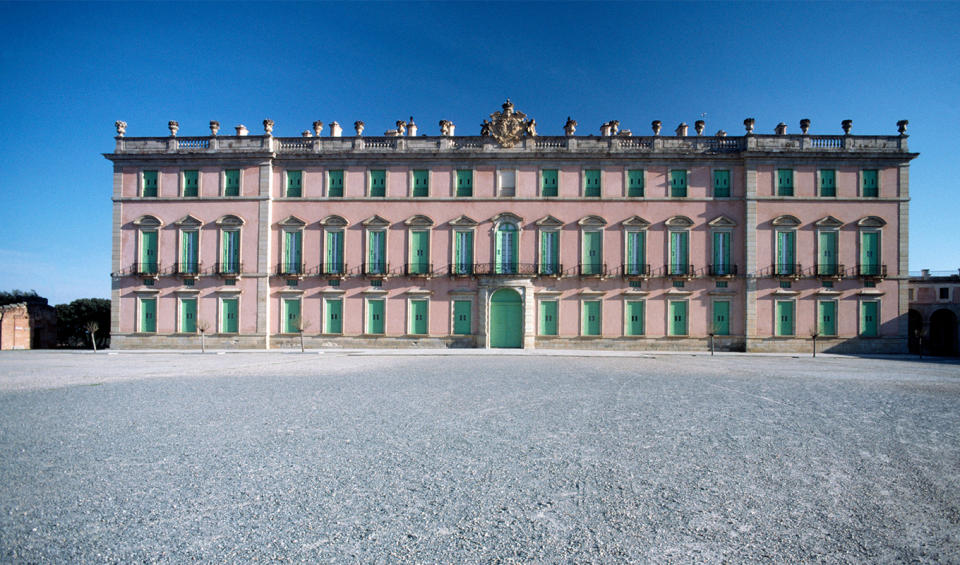
DEA/C. SAPPA/Getty Images
Known for its classical Romanesque architecture, the design of Riofrío Royal Palace was heavily influenced by Philip V’s Italian wife, Elisabeth Farnese, who had architect Virgilio Ravaglio draw up the plans. Only two kings have ever lived here: King Consort Francisco de Asis and King Alfonso XII.
8. Royal Palace of la Almudaina

Vladislav Zolotov/Getty Images
The Royal Palace of la Almudaina is the monarch’s official residence when in Majorca, an island on the east coast in the Balearic Sea near Valencia. The ruins of 12th and 13th century Arab citadels still remain on the premises.
9. Reales Alcázares

ullstein bild/Getty Images
The product of the design influence of five monarchs, including King Ferdinand and Queen Isabella, Reales Alcázares is the monarch’s official residence in Seville. Meaning “fortress,” the property consists of Mudejar Palace, King Alfonso X’s gothic halls and Charles V’s renaissance decorations.
10. Monastery of the Descalzas Reales

Jorisvo/Getty Images
Joanna of Austria, Charles V’s youngest daughter, founded this monastery in Madrid by transforming a palace into a convent for Poor Clare nuns. “Descalzas Reales” translates to the “Royal Barefoot Sisters.” It is considered a Castilian plateresque palace with Genoese marble and Moorish tiles and plasterwork.
11. Royal Monastery of the Incarnation

JJFarquitectos/Getty Images
Established in 1611 by Philip III’s wife, Margaret of Austria, the Royal Monastery of the Incarnation is “considered one of the most beautiful in Spain’s capital city,” per the king’s website. It features 17th- and 18th-century artworks by Lucas Jordan, Juan Van der Hamen and Pedro de Mena. The reliquary is inlaid with 700 pieces of bronze, coral, ivory and precious woods.
12. Royal Monastery of St. Clare in Tordesillas
Founded in 1363 by Infanta Beatrice, this is a convent for the Order of St. Clare, built on the site of the Mudejar Palace in Valladolid, northwest of Madrid. Some of the palace’s features remain, including the façade and high chapel with its octagonal ceiling, considered the pièce de resistance of Toledo and Andalusia artisans. There are also Arab baths, frescoes and Castilian paintings.
13. Monastery of Santa María la Real de las Huelgas
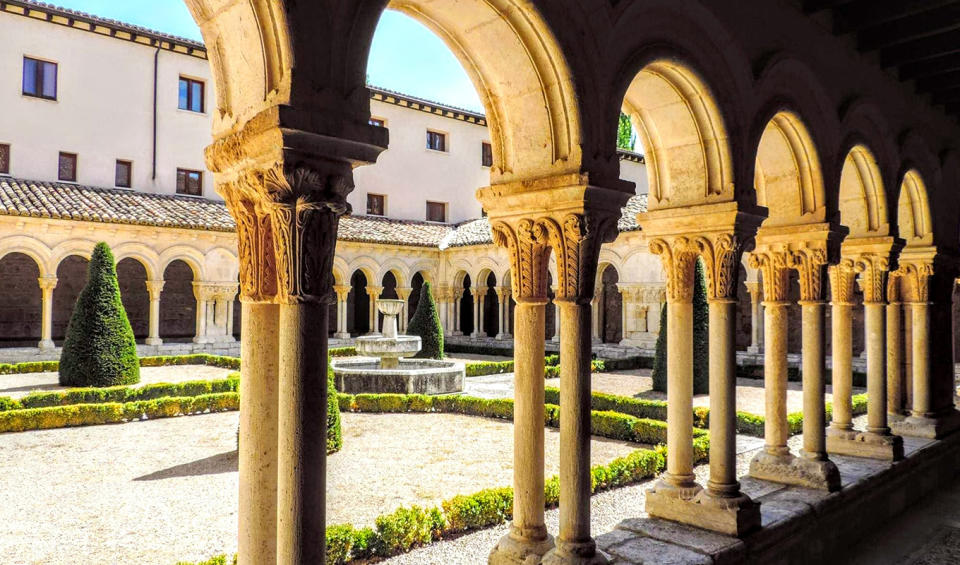
Juan Carlos fotografia/Getty Images
This Romanesque monastery in Valladolid is the site where Spanish kings were crowned, knighted and buried. Created by Alfonso VIII and Queen Leonor in 1187, it is now home to the Museum of Medieval Fabrics.
14. Monastery of Yuste
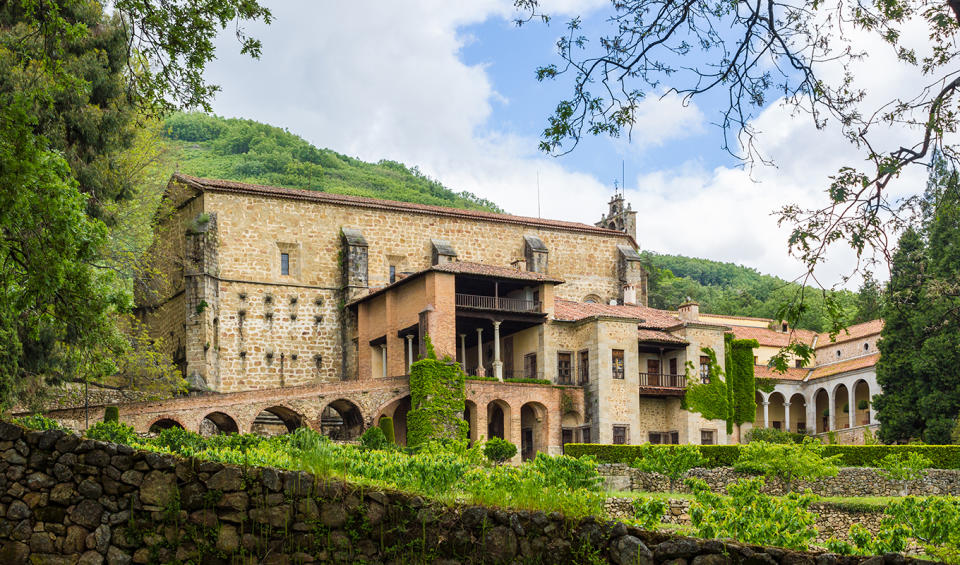
Proformabooks/Getty Images
West of Madrid, the Monastery of Yuste is the resting place of Charles V and hosts the Charles V European Award. The Hieronymite monastery, with its gothic and renaissance cloisters, was founded in 1414. Charles V was known to stroll the gardens and practice his fishing in the pond.
15. Pantheon of Illustrious Men
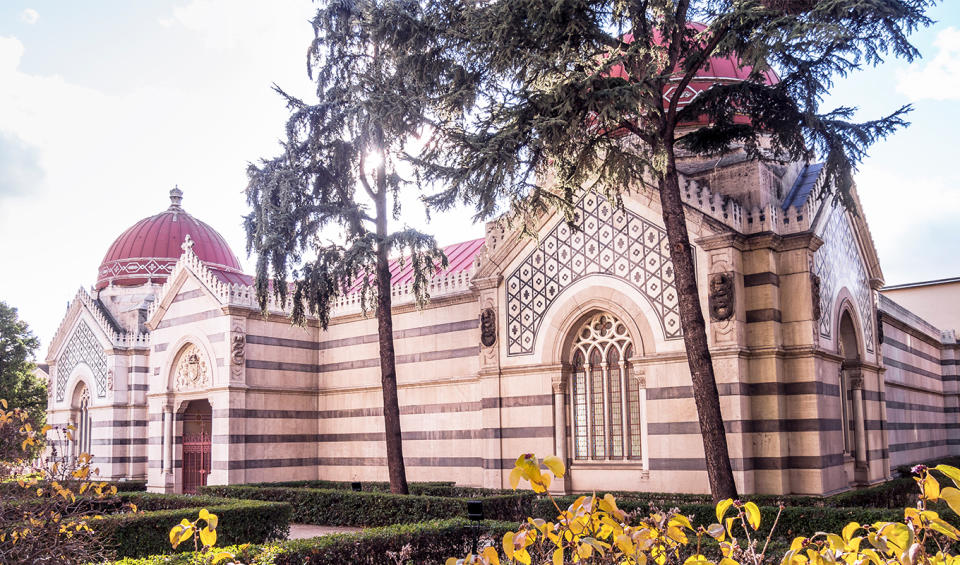
David Daguerro/Getty Images
As the name implies, this structure, with its neo-medieval cloister, holds the mausoleums of generals and politicians, including Sagasta, Cánovas del Castillo, Dato, Ríos Rosas, Canalejas and Gutiérrez de la Concha. It is located in the Basilica of Our Lady of Atocha in Madrid.
16. The Royal Basilica of Our Lady of Atocha

David Daguerro/Getty Images
A historic Madrid landmark, the basilica is named after the Virgin of Atocha, considered the patron saint of Spanish royalty. Baptisms and royal marriages have taken place here, and the church also served as military barracks under the French invasion. Charles I made it a working convent in 1523. Philip II called the Virgin of Atocha the patron saint of Madrid and would visit the chapel before and after every battle. It was set ablaze after the Civil war and rebuilt in 1951.
17. Monastery of Santa Isabel

LUNAMARINA/Getty Images
Famously depicted in Velázquez’s painting, “The Spinners,” this monastery was founded by Philip II as a convent for Augustinian nuns, which also served as a school for daughters of royal household employees. Considered one of royal architect Juan Gómez de Mora’s best works, it was pillaged by the French and sustained heavy damage after the Civil War.
18. School for Noble Maidens of Toledo
Established in 1551 by Cardinal Juan Martínez Siliceo, Archbishop of Toledo, it remains under the king and archbishop’s patronage. The Baroque church and tower feature a 16th-century bas-relief by Vázquez the Elder on the façade.

